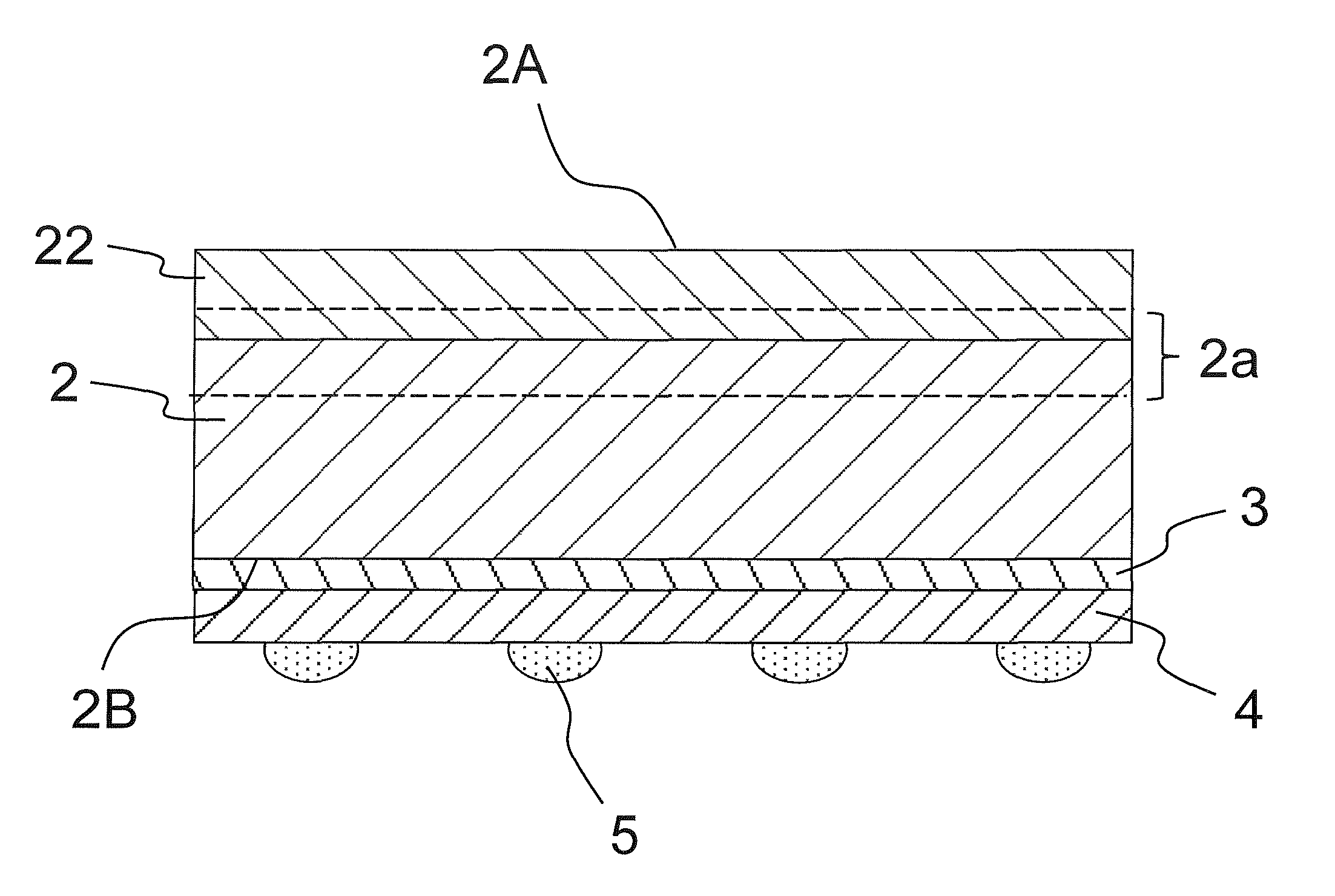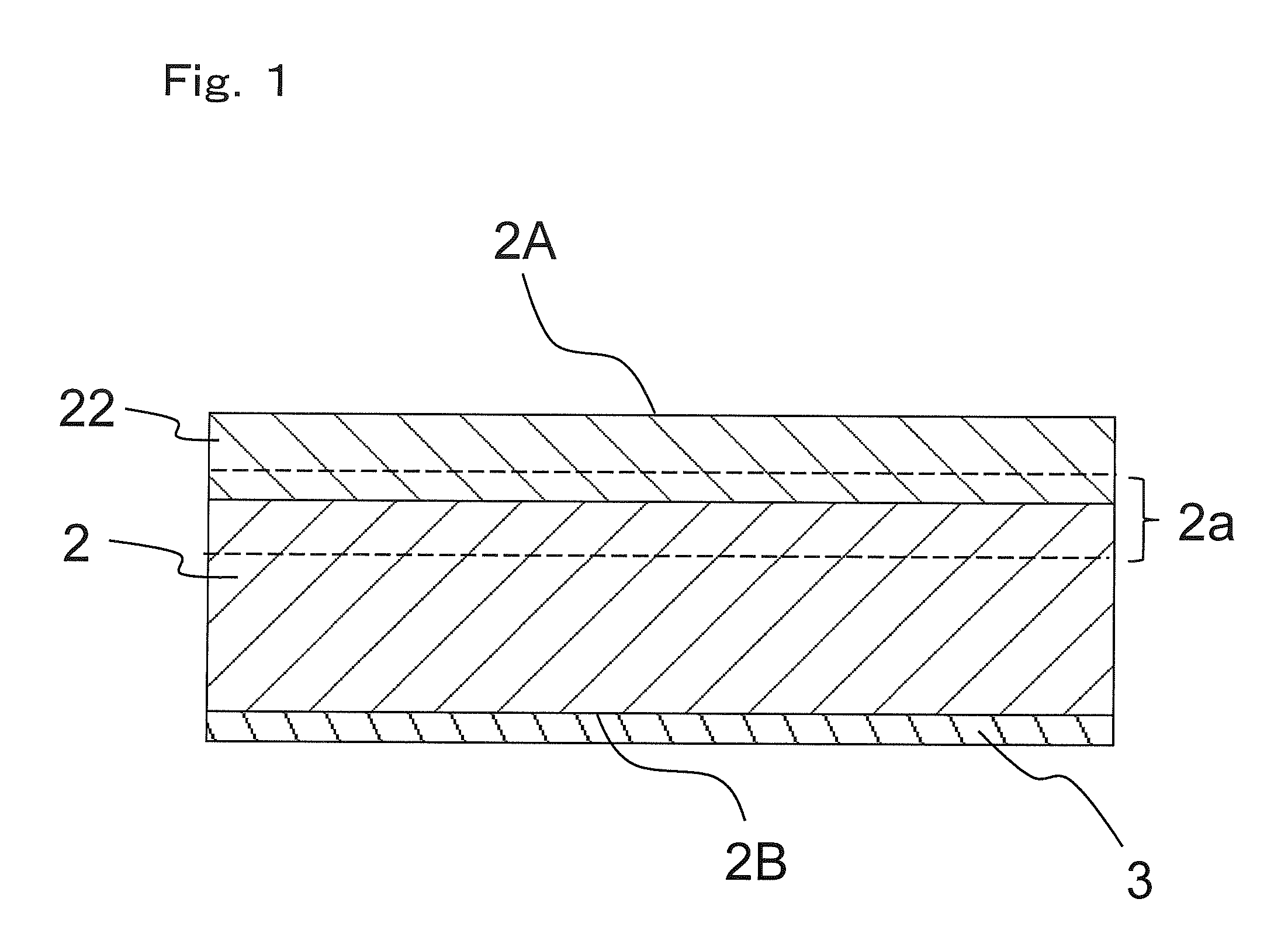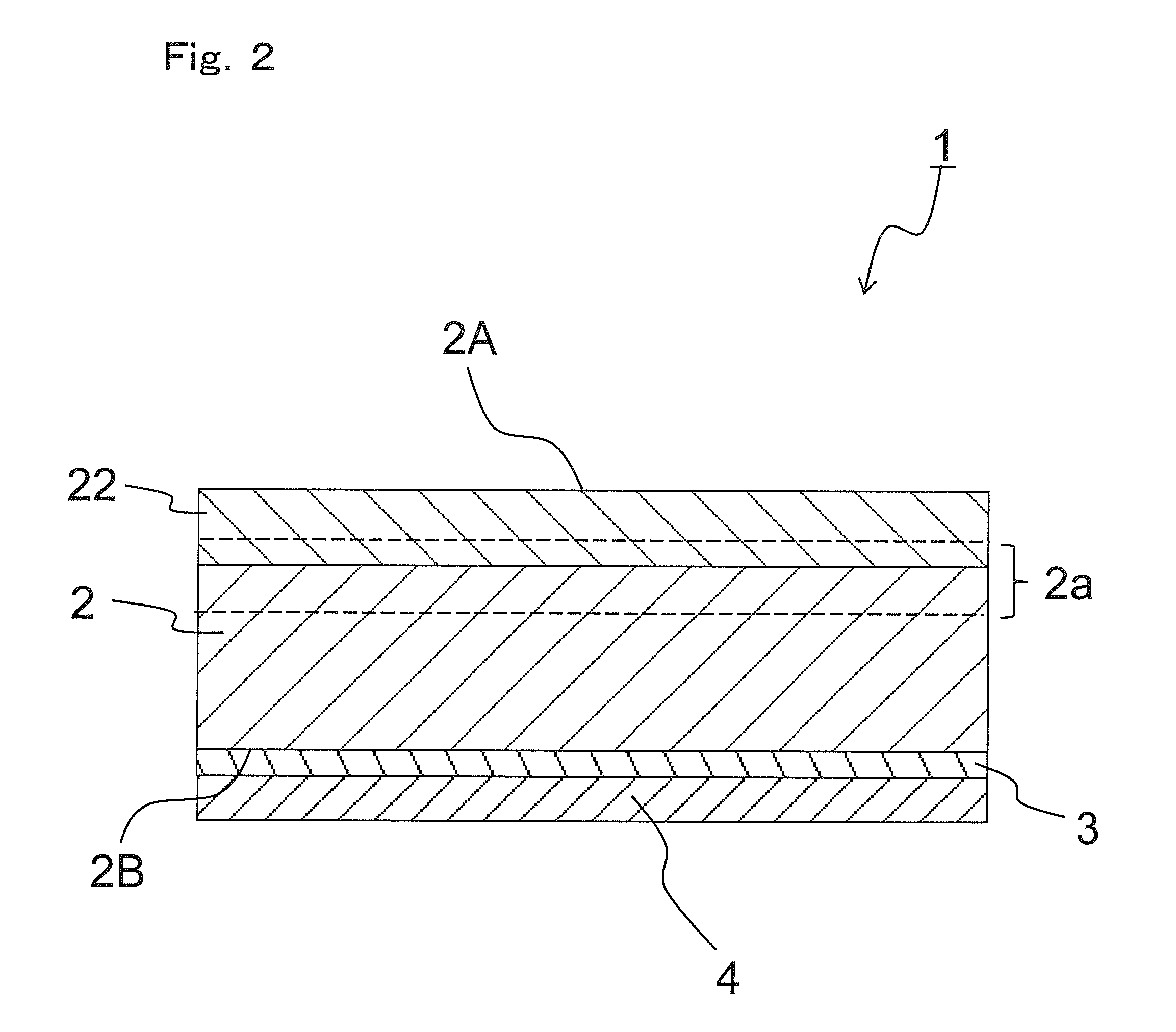Method for producing photoelectric converter and phtotelectric converter
a technology of photoelectric converters and conversion elements, which is applied in the direction of sustainable manufacturing/processing, climate sustainability, semiconductor devices, etc., can solve the problems of difficult to increase the current extracted from the substrate, and achieve the effect of reducing the recombination surface at the substra
- Summary
- Abstract
- Description
- Claims
- Application Information
AI Technical Summary
Benefits of technology
Problems solved by technology
Method used
Image
Examples
example 1
[0088]First, a p-type silicon substrate of a square of 156 mm on a side with a thickness of about 200 μm was prepared as the substrate 2. More specifically, the substrate 2 was formed by slicing a silicon ingot so that the first surface 2A and the second surface 2B are exposed. Then, the surface of the substrate 2 was slightly etched with the 10-fold diluted aqueous solution of hydrofluoric acid to remove the mechanically damaged layer and contaminated layer at the section of the substrate 2. Subsequently, phosphorus was diffused into the substrate 2 from the first surface 2A of the substrate 2, thereby forming the opposite conductivity type layer 22.
[0089]Subsequently, the first deposition step was performed by ALD. In the first deposition step, a first protective film 3 mainly containing aluminum oxide was formed over the surfaces of the substrate 2. The first deposition step was performed on the substrate 2 in a chamber of a deposition apparatus. In the first deposition step, dep...
example 2
[0095]A photoelectric conversion element 1′ produced in the same manner as in Example 1 was subjected to SIMS analysis. For SIMS, a dynamic SIMS was used. The results are shown in FIG. 7. FIG. 7 shows the results of a SIMS analysis performed on the substrate 2′, the first protective film 3′ and the second protective film 4′ of the photoelectric conversion element 1′ in the thickness direction from the surface of the second protective film 4′. In FIG. 7, numeral 7 represents the result of analysis on the photoelectric conversion element 1 before heating, numeral 8 represents the result of analysis on the photoelectric conversion element 1′ heated at 700° C. Also, in FIG. 7, numeral 9 represents the Comparative Example, in which only the first protective film 3 was formed by ALD.
[0096]For the photoelectric conversion element used for the analysis, the first protective film 3 was formed to a thickness of 40 nm, and the second protective film 4 was formed to a thickness of 20 nm. The fi...
PUM
| Property | Measurement | Unit |
|---|---|---|
| thickness | aaaaa | aaaaa |
| depth | aaaaa | aaaaa |
| compressive stress | aaaaa | aaaaa |
Abstract
Description
Claims
Application Information
 Login to View More
Login to View More - R&D
- Intellectual Property
- Life Sciences
- Materials
- Tech Scout
- Unparalleled Data Quality
- Higher Quality Content
- 60% Fewer Hallucinations
Browse by: Latest US Patents, China's latest patents, Technical Efficacy Thesaurus, Application Domain, Technology Topic, Popular Technical Reports.
© 2025 PatSnap. All rights reserved.Legal|Privacy policy|Modern Slavery Act Transparency Statement|Sitemap|About US| Contact US: help@patsnap.com



